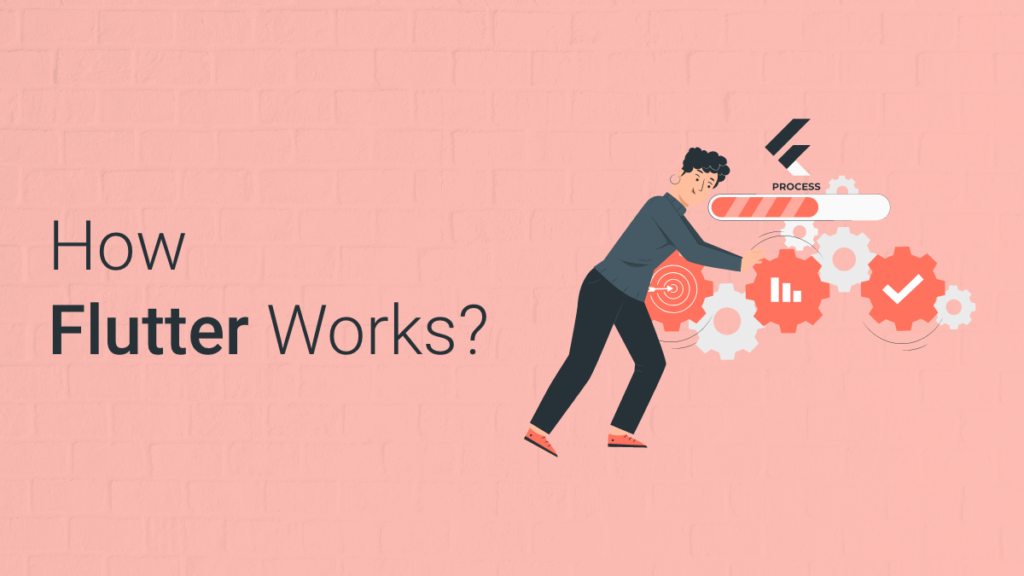2015 had no Flutter, but a browser war. Chrome developers optimised their browser. This led the engineers to remove CSS from the browser engine, which improved performance.
Flutter grew from realising it must be used. We’ll cover what Flutter is and how to utilise it to build beautiful apps quickly.
What is Flutter?
Flutter is an open-source tool for coding Android and iOS apps. Flutter’s first stable version 1.0 debuted at Flutter Live in December 2018.
Flutter offers easy programming with native-like performance and platform-consistent visuals. Dart was meant to replace JavaScript in Flutter. Flutter is free and open-source. On GitHub and Stack Overflow, Flutter is as popular as React Native. We recently compared Flutter with React Native using nine criteria.
Flutter is used for Google Assistant modules and the Home Hub UI. 50,000 Flutter apps are already in the Google Play Store, and this figure is rising quickly. Alibaba Group, eBay, and Groupon employ Flutter to create unified online and mobile apps.
Google’s Group Product Manager Tim Sneath states, “Our ambition for Flutter is a powerful, general-purpose, open UI toolkit for designing great experiences on any device-embedded, mobile, desktop or beyond.”
How Flutter Works: Widget Strategy and Dart Programming Language
Flutter, built in Dart, has an engine, library, and widgets. Flutter’s declarative UI writing differs from others. Before developing an element, the user must have a clear vision of its UI. Many developers consider this UI writing clearer, but it can be tough at first.
Flutter lets developers design UIs by combining widgets. The app interface has nested widgets that can be any object. By merging widgets, the developer can personalise the software drastically. Widgets can interact and use built-in functions to respond to state changes. Widgets are key UI elements for Android, iOS, and web apps.
Developers can simply mix bespoke widgets with Flutter. Flutter Gallery provides developers with ready-made widgets that look like native Android and iOS design languages (Material and Cupertino).
Flutter lets developers view widgets reactively. Flutter isn’t the first SDK to offer a reactive look without a JavaScript connection. Dart includes software packages to boost application functionality. It includes many Firebase packages so developers can design serverless apps. Another package provides access to the Redux data warehouse or platform services and equipment like cameras.
Why Use Flutter?
Stability, performance, successful support, and improving technology and goods are important to the company. Hire dedicated developers in USA for your Flutter app development project. Any faults or weaknesses in these areas might lead to direct and indirect financial losses.
- Compilation of native code and high-performance rendering engine provide best-in-class (cross-platform) performance and resource utilisation. First, platform channels simplify communication between native code and Dart. Developers can implement anything a native app can do in a Flutter app with a little extra work. Due to the engine (Flutter uses Skia for rendering), a Flutter UI can be launched on almost any platform that supports Flutter. Developers no longer need to adapt the UI to a platform, which streamlines development.
- Good UX depends on application performance. Flutter application performance is usually identical to native. Flutter doesn’t employ code representations or interpretations. Flutter applications are compiled directly into machine code, reducing interpretation issues. This makes it the most efficient cross-platform software.
- Flutter’s code-writing speed improves developer productivity. It has ready-to-use widgets, less code to write, and faster hot reloads to find and fix errors. This saves developers time.
- Finding Flutter engineers in 2020 won’t be a problem, especially among Android developers. According to Stack Overflow Developer Survey 2020, 68.8% of developers enjoy Flutter and want to keep using it.
- Faster market entry. Hire flutter developers for better productivity, it takes less time to construct an app, hence Flutter apps are produced faster and hit the market earlier with equivalent effort. Less coding and support means faster time to market.
Developing apps cheaply. Flutter speeds up app development, thus less man-hours are needed. The hourly rate is market-average or lower. Flutter reduces application costs compared to alternative cross-platform languages or native programming.
“Starting Flutter was great. Reflectly Co-Founder Jacob Kristensen believes immediate stateful Hot Reload is mind-blowing.
Flutter’s drawbacks
- Flutter provides many benefits for organisations, but some areas require improvement.
- Not duplicate New technology Flutter. Third-party Flutter libraries are limited. Third-party libraries speed up Flutter development, therefore this is a drawback.
- Gigabytes. Most Flutter apps are mobile-only. Despite increased storage capabilities, file size is still significant. Flutter’s hello world app could be 4.7MB to 6.7MB. Native Java programming is 500KB.
- Required skills. Flutter can be used by non-programmers, but developers must first master Dart. This adds a learning process, which might increase project costs. A Java/C# developers can easily learn Dart. Flutter’s Dart programming language is straightforward for beginners.
If you’ve decided Flutter is your solution after reading the above, consider the following:
- Creating an app using rare native libraries; constructing progressive web and instant apps (small-size apps); interacting with the device hardware with no plugin; developing AR/VR apps.

